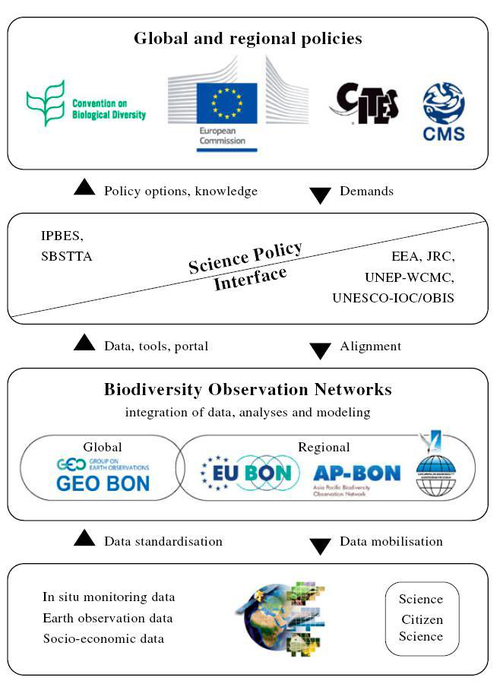
Biodiversity Observation Networks (BONs) have recently become a hot topic on the scene of natural sciences. But what is their role in advancing our knowledge of biodiversity and associated ecosystem services?
A new paper in the Biodiversity journal uses the European Biodiversity Observation Network (EU BON) as an example, to explain how they can fill in gaps and address existing barriers in knowledge through implementing an integrated biodiversity information framework.
Biodiversity supports essential ecosystem services that are key to human well-being. The ongoing global biodiversity decline is a threat to humans, particularly in developing countries.
The Aichi biodiversity targets of the United Nations' Strategic Plan for Biodiversity set ambitious goals for protecting biodiversity from further decline, but gaps in knowledge still sit in the way of monitoring progress, hindering the assessment of the current status and future trends of biodiversity.
 There is an urgent need for a paradigm shift with regards to how biodiversity data are collected, stored, shared and streamlined in order to tackle many sustainable development challenges ahead.
There is an urgent need for a paradigm shift with regards to how biodiversity data are collected, stored, shared and streamlined in order to tackle many sustainable development challenges ahead.
Solving issues of biodiversity knowledge gaps and data reuse are a main focus of the EU BON project and provide a European contribution to GEO (Group on Earth Observations) and the wider Global Earth Observation System of Systems (GEOSS).
The EU BON project aims at addressing the need for a shift towards an integrative biodiversity information framework, starting from collection to the final interpretation and packaging of data.
At the centre of the EU BON's efforts is promoting and adopting existing standards of good practice and integrating data within a single biodiversity portal in order to make it discoverable, accessible and digestible. The aim of the portal is to collect and standardize existing data sources, as well as to work towards translating and visualizing the collected raw data to show trends and prognoses useful to policy and society.
"Biodiversity data, information and knowledge are diverse, dispersed and disparate. It is hard for a non-specialist to make sense of raw data and often separate data sets and gaps in data prevent effective policy reporting. This is why progress towards the Aichi targets is often hard to calculate, and where BONs can play a central role by working towards standardization to achieve true interoperability of data sets." explains the lead author Dr. Florian T. Wetzel,Museum für Naturkunde (MfN), Berlin.
"For advancing with the biodiversity challenge and the Aichi Targets globally, regional BONs are needed, and this is where EU BON attempts to make a difference for Europe" adds Dr. Christoph L. Häuser, EU BON coordinator and Deputy Director General at MfN, Berlin.
###
Original Source:
Florian T. Wetzel, Hannu Saarenmaa, Eugenie Regan, Corinne S. Martin, Patricia Mergen, Larissa Smirnova, Éamonn Ó Tuama, Francisco A. García Camacho, Anke Hoffmann, Katrin Vohland & Christoph L. Häuser (2015): The roles and contributions of Biodiversity Observation Networks (BONs) in better tracking progress to 2020 biodiversity targets: a European case study, Biodiversity, DOI: 10.1080/14888386.2015.1075902




 RSS news
RSS news Print this article
Print this article
